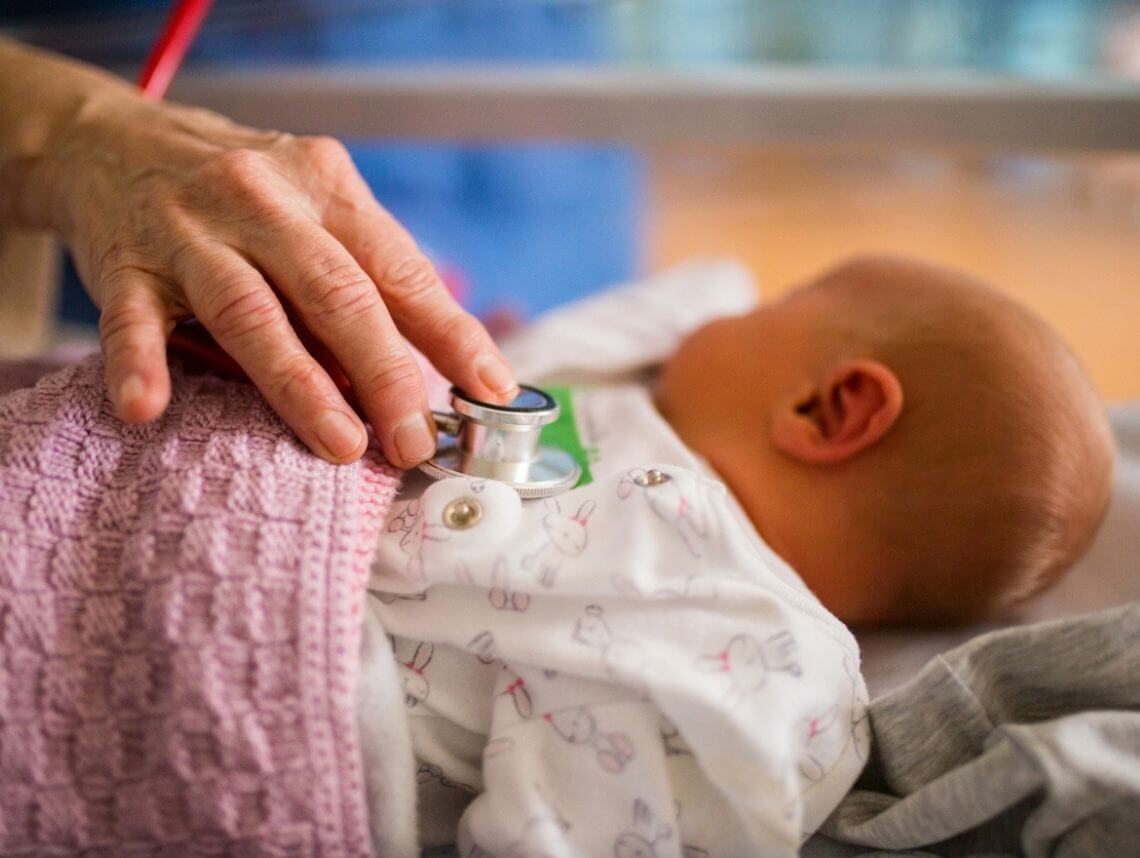One of the worst news anyone can receive is a serious medical diagnosis — and it can feel even worse when the person receiving it is your child. One such serious medical diagnosis is often an unfamiliar one, yet it clearly affects vital organs. It’s known as bronchopulmonary dysplasia. What is it? What causes it? What are some of the signs and symptoms you should look out for? And, what is the best form of treatment for your baby?
What is bronchopulmonary dysplasia?
Bronchopulmonary dysplasia (BPD) is a chronic breathing disorder that affects newborns. It is most likely to occur in premature babies or those who had a low birth weight — due to their lungs not being fully developed. The condition happens when there is inflammation and scarring in the lungs and can range from mild to severe. While some babies continue to experience breathing difficulties throughout their lives, others fully recover while they are still infants.
What causes bronchopulmonary dysplasia?
There are several factors that could affect fetal development — and thus increase the risk of bronchopulmonary dysplasia in a baby. The most common ones include:
- Prenatal infections
- Preeclampsia
- Inflammation of the fetal membranes
- Smoking or drug use during pregnancy
- Acute respiratory distress syndrome (ARDS)
- Patent ductus arteriosus
What are the symptoms of bronchopulmonary dysplasia?
The symptoms of BPD vary depending on the severity of the condition. The most common ones include:
- Frequent lung infections
- Rapid and/or labored breathing
- Shortness of breath
- Apnea (pauses in breathing that last for a few seconds)
- Feeding difficulties
- Wheezing
- Bluish hue around the mouth (cyanosis) – due to low oxygen levels in the blood
- Grunting while breathing
- Nostrils flare while breathing
- Skin pulling in between the ribs or collar bones (retractions)
In addition, while it’s common for premature babies to receive oxygen therapy, if the baby needs to continue its use after the gestational age of 36 weeks, it may be a sign of bronchopulmonary dysplasia. You should talk to your doctor if you suspect your infant may be experiencing this disease.
Diagnosis & Treatment of Bronchopulmonary Dysplasia
To diagnose a baby, doctors can order imaging tests — such as chest x-rays, CT scan, or MRI. They may also recommend blood testing to check the oxygen and carbon dioxide levels. If the premature baby was born with heart problems, the physician may also recommend an echocardiogram to verify whether the conditions are connected.
1. Ventilator
Premature babies who develop BPD receive ventilation treatment while in the neonatal intensive care unit (NICU). Once discharged from the hospital, the doctor may order continued oxygen therapy at home.
2. Pulse Oximetry
Your baby may need to get their oxygen levels measured regularly with a pulse oximeter. This is also important to do, since infants with BPD are more likely to develop asthma or other respiratory conditions.
3. Nutrition Modifications
Babies with BPD may need to consume additional nutrition. In some cases, they may need a tracheostomy tube (g-tube) to allow the nutrients to reach their stomach directly.
4. Medications
The doctor may prescribe medications to decrease swelling in the lungs, as well as to improve airflow. In some instances, the baby may need to take diuretics to reduce excess fluids, or antibiotics to manage infections and/or prevent pneumonia.
Contact Sonas for Home Health Care in Florida
It can be hard to balance your time between work, home, and caring for a loved one. That’s why our team of skilled professionals at Sonas Home Health Care is here to help.
Our home health care services offer support in the comfort of your home. We refer loving and competent nurses to provide customized care for families — from a few hours a day to around-the-clock supervision. Contact us directly to speak with a home health care professional or request a free in-home assessment. Together we can determine the best plan of action to keep your loved ones happy and healthy.
If you or a loved one are considering pediatric home health care services in Florida, contact the caring staff at Sonas Home Health Care. Call today at (888) 592-5855.
This blog was reviewed by Jillian Miller BSN, RN — Director of Nursing for Sonas Home Health Care’s Tampa Bay market — for clinical accuracy. Jillian Miller has been a nurse for 16 years — working primarily in pediatrics. She believes the best part of working with the pediatric population is when you see smiles from clients when you first enter the room. She loves seeing the difference you can make in families’ lives while providing the best care possible for them.

